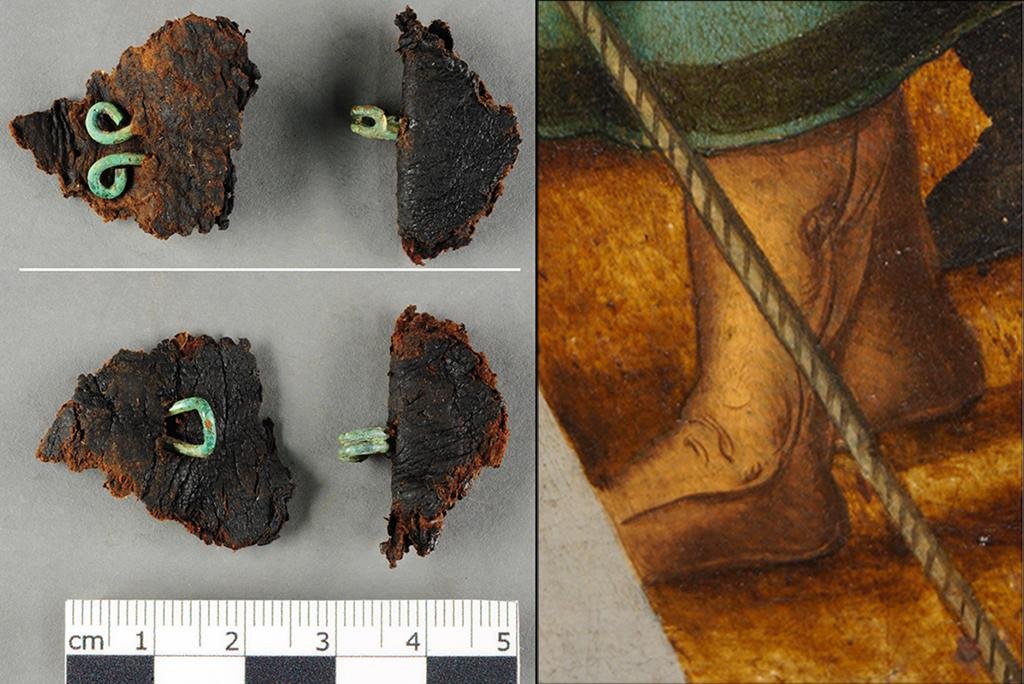Archaeologists from the Bavarian State Office for Monument Preservation (BLfD) have discovered five burials east of Lauingen, Germany, providing evidence regarding the Danube campaign of the Schmalkaldic War (1546-1547). This is the first archaeological evidence of Emperor Charles V’s military activity in the area, which also correlates interestingly with details depicted in a 1551 painting.
 Painting “Charles V’s Camp near Lauingen” by Matthias Gerung. Credit: Hermann Müller, City Archives Lauingen (Donau)
Painting “Charles V’s Camp near Lauingen” by Matthias Gerung. Credit: Hermann Müller, City Archives Lauingen (Donau)
The Schmalkaldic War was a conflict between Charles V, Holy Roman Emperor, and Maurice, Duke of Saxony, against the Lutheran Schmalkaldic League, which was a military alliance of Protestant principalities and cities within the Holy Roman Empire. The war was fueled by Charles V’s attempts to reᴀssert Catholic authority and neutralize Protestantism. Charles V’s forces won the battle at Mühlberg in 1547, but by that time, Protestant ideas had already spread throughout Europe and could not be contained by military force alone.
The new graves were found at the site of what became the imperial military camp near Lauingen, which has been vividly depicted in the painting Heerlager Karls V. bei Lauingen (Charles V’s Military Camp near Lauingen) created by Matthias Gerung in 1551. This painting, which is still preserved in Lauingen, captures the event shortly after the town council surrendered to the emperor’s forces in October 1546.
According to Dr. Johann Friedrich Tolksdorf, Deputy Head of Archaeological Heritage Conservation in Swabia at BLfD, the burials contain five young men who likely died during the emperor’s campaign. “The age of the coins suggests a direct connection between these burials and the short period of the Schmalkaldic War between October and November 1546,” Dr. Tolksdorf stated in a press announcement.
 Archaeological find: hooks and eyes of a boot fastener (left), and boots in the painting “Charles V’s Camp near Lauingen” (right). Credit: BLfD / Hermann Müller, Stadtarchiv Lauingen (Donau)
Archaeological find: hooks and eyes of a boot fastener (left), and boots in the painting “Charles V’s Camp near Lauingen” (right). Credit: BLfD / Hermann Müller, Stadtarchiv Lauingen (Donau)
Four small silver coins were discovered in one of the graves by the archaeological team. These coins appear to be from the sixteenth century. It is strange to find these coins, as graves from this time usually do not contain such artifacts. Along with this, a boot fastener with hooks and eyelets was also found, which is a rare object that appears in Gerung’s painting as well. Analysis of the skeletal remains revealed that the shinbones were severely overused, indicating that the soldiers had extensively marched during this campaign.
In September 1546, the course of the war turned in favor of Emperor Charles V, according to historical records. With troops from the Netherlands, the imperial army advanced through the Ries and seized Donauwörth on 9 October 1546. On 13 October, Lauingen was reached by the army, which surrendered without resistance. This momentous event, when the town council paid homage to the emperor in his military camp, was immortalized by Gerung five years later.
 Four small silver coins were discovered in one of the graves. Credit: BLfD
Four small silver coins were discovered in one of the graves. Credit: BLfD
Previously, isolated human burials along the old Roman Danube-North Road were discovered. The findings provide physical proof of Charles V’s campaign and reaffirm the accuracy of historical artworks as sources of documentation. The excavation team is analyzing the remains in the hope of finding out more details about the soldiers’ lives and their role in history.
More information: BLfD





